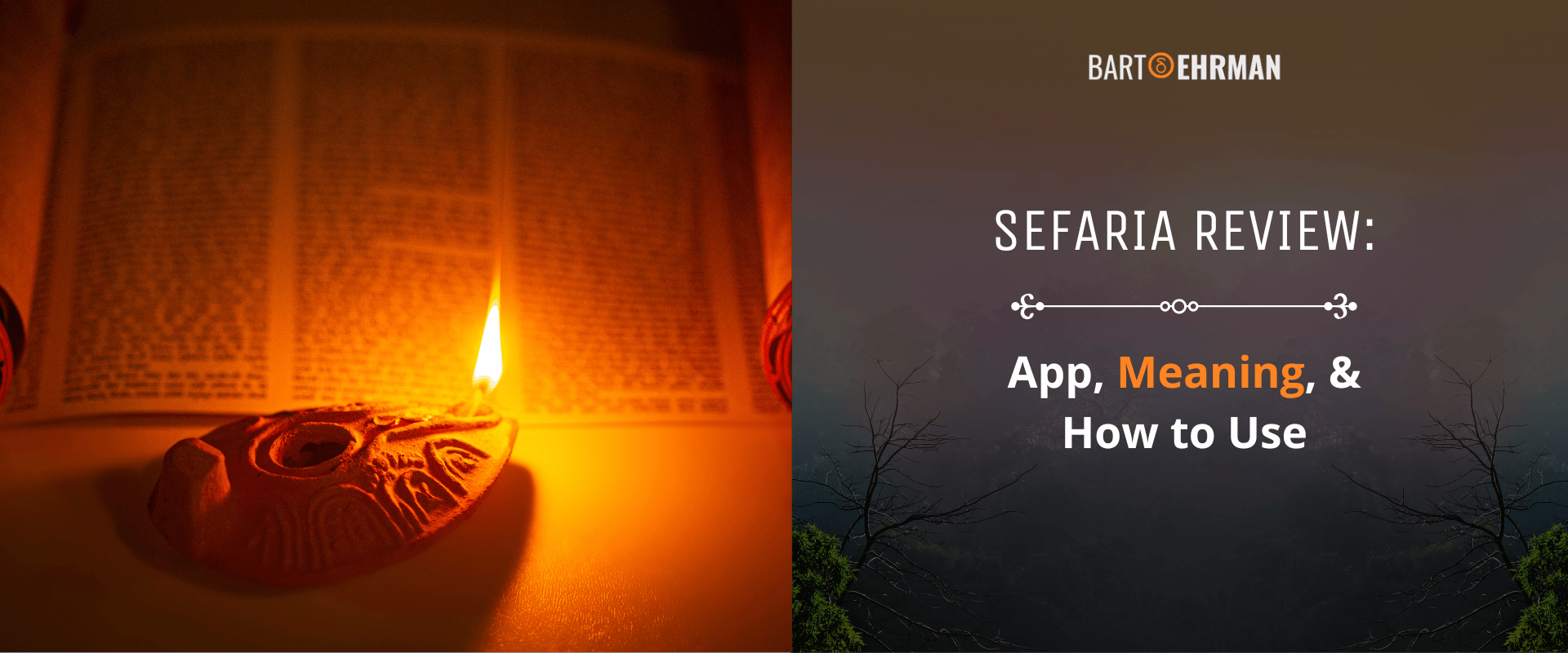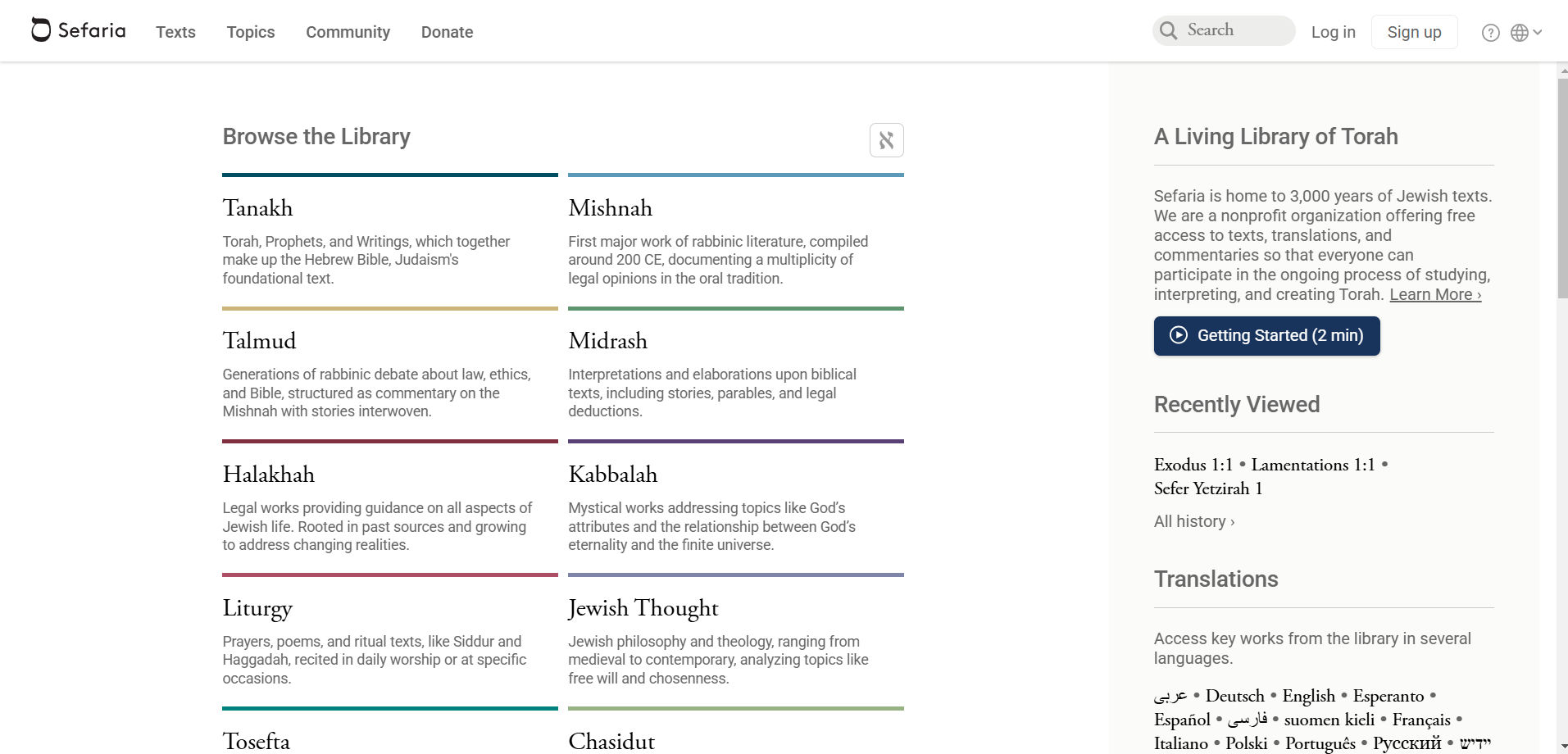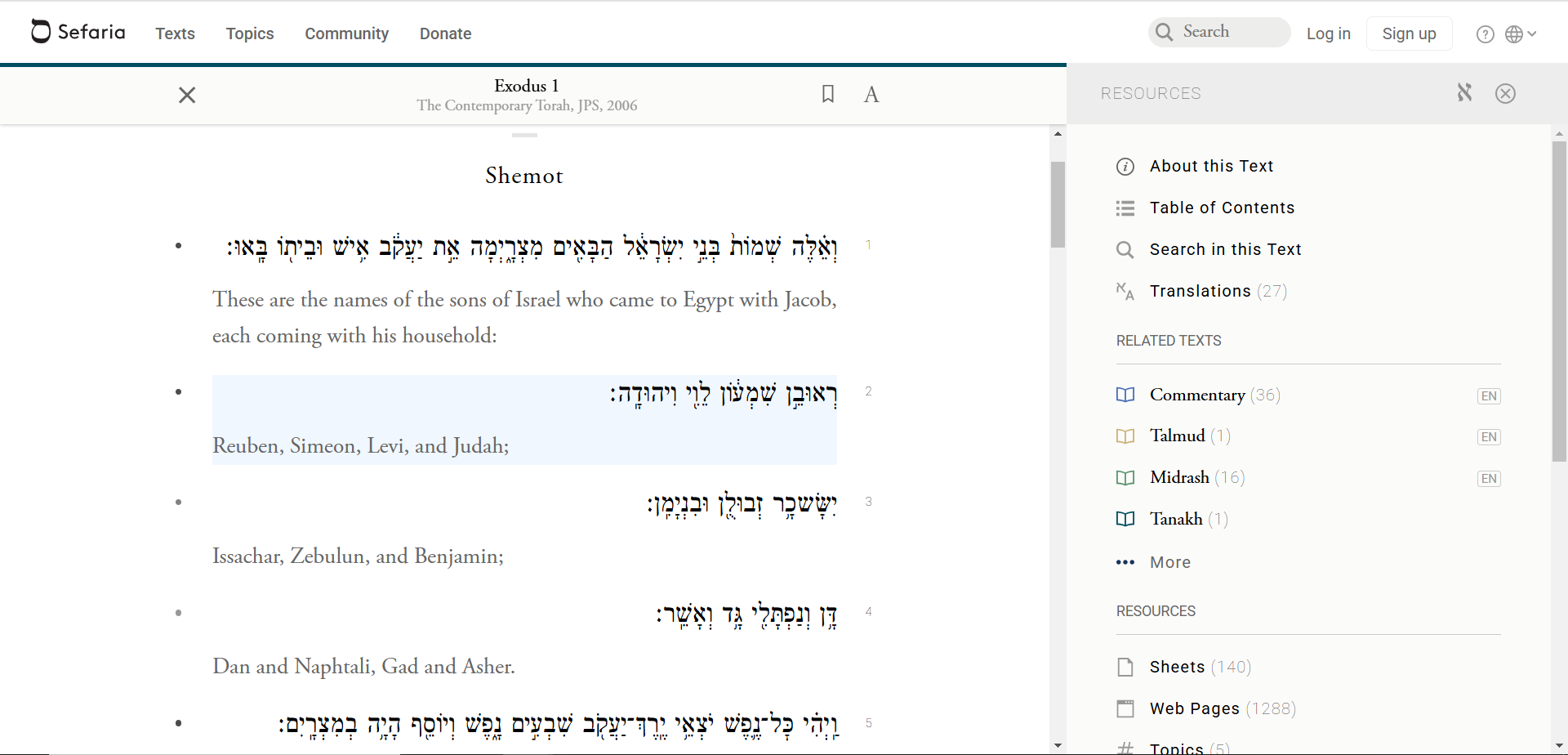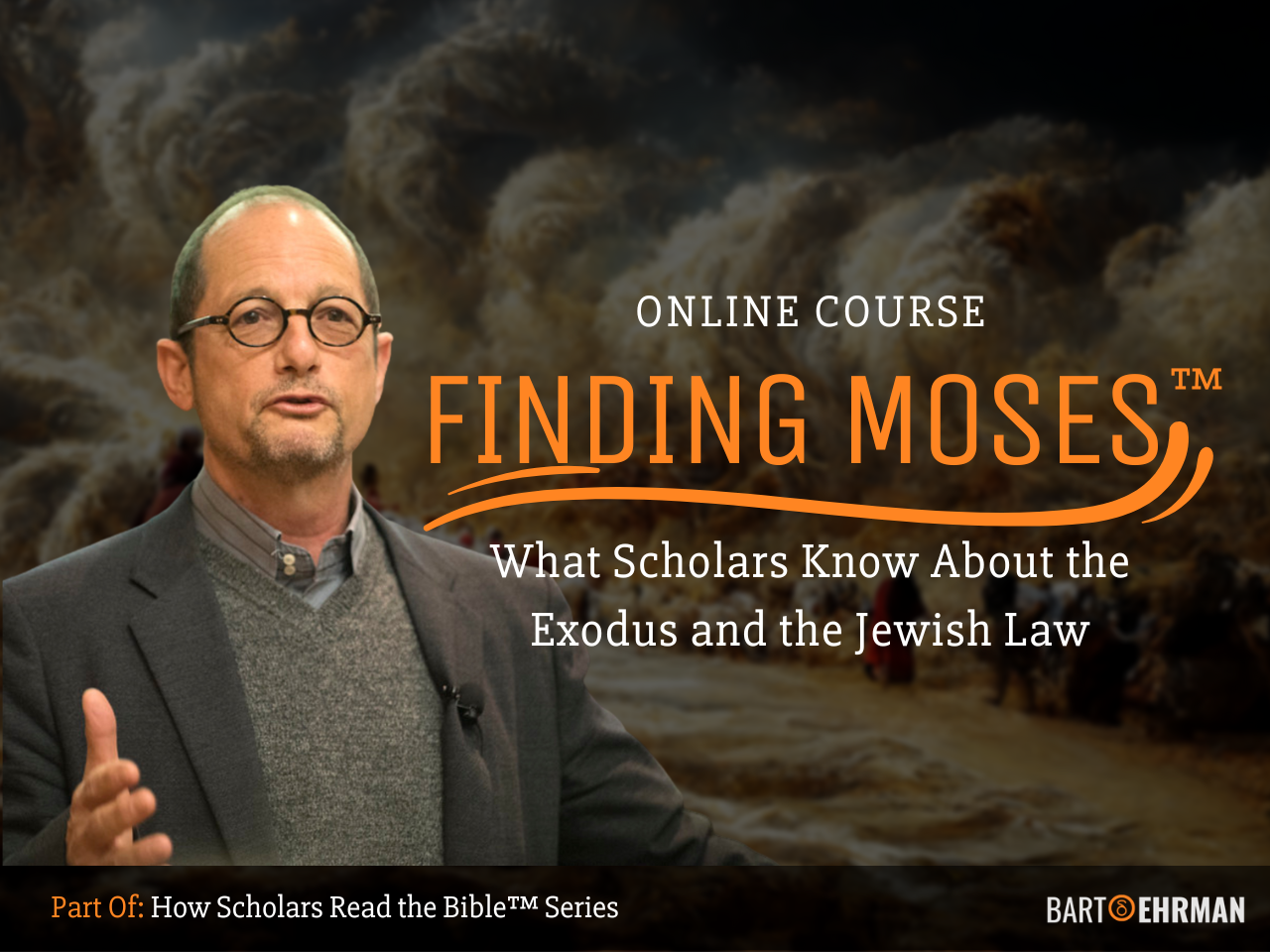Sefaria Review: App, Meaning, & How to Use

Written by Marko Marina, Ph.D.
Author | Historian
Author | Historian | BE Contributor
Verified! See our guidelines
Verified! See our editorial guidelines
Date written: March 16th, 2025
Disclaimer: The views and opinions expressed in this article belong to the author and do not necessarily match my own. - Dr. Bart D. Ehrman
I remember one of my older professors describing the sheer effort it once took to conduct serious research before the digital age. Finding a single book could mean traveling from one library to another, combing through endless card catalogs, and hoping that a crucial reference hadn’t already been checked out.
Even with the right book in hand, locating a specific quote or passage often required hours of meticulous page-turning. Scholarship, in those days, was a test of both patience and persistence. As you’ll see from the forthcoming Sefaria review, things have changed substantially.
Today, we live in an era where information is at our fingertips. What once took weeks or even months can now be accomplished in minutes, thanks to digital platforms that have revolutionized how we access, search, and study texts.
Sefaria is an open-source digital library that is one of the most remarkable examples of this transformation. It makes a vast collection of Jewish texts freely available online. This overview will explore what makes this platform so valuable to scholars, students, and anyone interested in engaging with Jewish literature.
In the following sections, we’ll take a closer look at Sefaria’s features, usability, cost, and user feedback, as well as how it compares to other similar platforms.
Whether you’re a seasoned scholar or a newcomer to the field, understanding how Sefaria fits into the landscape of digital humanities is essential for appreciating the future of textual study.
However, since we are about to dive into an app that brings the wealth of the Jewish religious tradition to all, you might also be interested in exploring how scholars approach one of the most pivotal narratives in Jewish history — the Exodus.
In his online course, "Finding Moses: What Scholars Know About the Exodus and the Jewish Law," Dr. Bart D. Ehrman takes a deep, critical dive into what historians and biblical scholars have uncovered about these events.
With 8 engaging lectures, this course unpacks the historical, literary, and archaeological perspectives on Moses, the Exodus, and Jewish law. If you're curious about what scholars really know, check it out!

Sefaria Review: What Is It and Who Should Use It?
At the beginning of our Sefaria review, it’s important to provide its definition. Sefaria is a free digital library dedicated to making the vast corpus of Jewish texts accessible to the world.
Founded as a nonprofit initiative, it has grown into a robust platform powered by a team of around 40 professionals, including Akiva Berger (Director of Engineering) and Rachel Buckman (Senior Learning and Engagement Specialist).
Their mission, in their own words, is simple yet ambitious: “To make the core Jewish canon as accessible to as many people as possible.”
With a user-friendly interface and a powerful search engine, Sefaria allows anyone to explore sacred texts like the Tehillim or Psalms, Talmud, Midrash, and rabbinic commentaries, along with translations and interlinked commentaries that provide deeper insight into Jewish tradition.
But Sefaria is more than just a digital archive. It’s an interactive platform that fosters engagement and community. Unlike traditional repositories of Jewish texts, which often exist as isolated databases, Sefaria encourages social interaction.
Users can create accounts, follow others, share insights, and contribute their reflections on texts. This feature transforms the experience from passive reading to active participation, allowing both laypeople and scholars to engage in meaningful discussions about Jewish law, philosophy, and tradition.
The importance of a platform like Sefaria in the digital age cannot be overstated. The Jewish tradition is one of the foundational pillars of Western civilization, shaping not only religious thought but also ethics, law, and cultural identity.
In a world where historical and religious literacy is often in decline, a tool that centralizes, organizes, and democratizes access to Jewish texts is revolutionary. Instead of scattered resources locked behind paywalls or inaccessible academic institutions, Sefaria provides an open door to one of the richest intellectual traditions in human history.
Moreover, Sefaria represents a digital treasure trove of information for scholars, offering instant access to texts that once required extensive library visits or expensive printed editions. And it goes far beyond the Hebrew Bible — we’ll get back to that later. However, before that, let’s take a look at how one can use Sefaria.

Sefaria Review: How to Use It
The first thing I think of when I come across an incredible resource like Sefaria is the cost. Surely, something this valuable must come with a hefty price tag, right? But here’s the surprising part: There’s no cost to download Sefaria — everything on it is completely free.
No hidden fees, no premium subscriptions, and no locked features. The reason? As the Sefaria team puts it: “The Torah is the treasure of the entire Jewish people.” Consequently, it wouldn’t be right to put that treasure behind a paywall.
This philosophy reminds me of an old idea found in both Christianity and Islam — that knowledge is a gift from God and should be accessible to all.
Of course, even free platforms need funding to survive, and Sefaria operates as a nonprofit organization. If you appreciate the platform and want to support its mission, you have the option to donate — either as a one-time gift or through monthly contributions.
It’s a smart model that keeps knowledge open to everyone while allowing those who can afford it to help sustain the project. Even better, Sefaria lets you dedicate your donation in honor of someone, which is a meaningful way to support both the platform and a loved one at the same time.
Sefaria Review: Features and Interface
Sefaria is an open-source platform that can be accessed in two ways: Via its website or through the Sefaria app (available for iOS and Android). I’ve tried both, and I have to say the interface is quite good. Everything is intuitive and user-friendly, making it easy to navigate whether you’re a casual reader or a scholar diving into deep research.
One of the standout features is the search function. You can quickly find any portion of a particular Jewish text by simply typing a keyword or verse. But that’s just the beginning!
Texts on Sefaria are also topically searchable, which means if you’re interested in a subject like “Jewish Calendar,” “Siddur (Jewish prayer),” or “Social Issues,” you can browse texts that specifically relate to those themes.
Want to see what the Torah says about Yom Kippur? With a couple of clicks, you’ll have all the relevant verses in front of you — including Leviticus 23:26-32, which details the observance of this sacred day.
However, the real game-changer is the resource panel available when exploring the Tanakh (Jewish Bible). Click on a verse, and suddenly, a wealth of interconnected texts appears — including historical and contemporary commentaries, Talmudic discussions, Midrashic interpretations, and much more.
Since one of my most recent articles was about Moses and the Exodus, I decided to check out Exodus 7:17-18, which describes the first plague (water turning into blood). With just one click, I could see how different Jewish commentators throughout history have interpreted this passage.
Take Ibn Ezra, for example — one of the most distinguished Jewish biblical commentators of the Middle Ages. His insights, alongside those of others, provide a unique window into what scholars call “reception history” — how people have understood a particular verse or story in different periods.
Decades ago, accessing these interpretations meant traveling from library to library, sifting through physical volumes. Now? It’s all at your fingertips.
Sefaria also makes it easy to toggle between English, Hebrew, or bilingual modes, displaying both languages side by side. This is a dream feature for scholars and anyone learning Hebrew, as it allows for easy comparison between the original text and its translation.

Where and How Can People Use Sefaria?
While Sefaria is an incredible tool for scholars, its impact extends far beyond the world of academia. It has become an essential learning resource for teachers, students, and laypeople exploring Jewish texts in various settings.
Shifra Elman, Dean of Jewish Studies at The Kehillah School in Palo Alto, explains how she incorporates Sefaria into her ninth-grade class:
We emphasize the many Torah translations available on Sefaria. This helps students who don’t know Hebrew avoid over-reliance on a single definition.
This feature is especially valuable for beginners, allowing them to compare translations and gain a broader understanding of key texts. Elman also highlights the topic-based search function, which gives educators a powerful tool for crafting lessons.
For example, searching for “Values” brings up a broad collection of verses related to ethics and practices in Jewish tradition, making it easy to find relevant material for discussion.
User Reviews: What Do People Say About Sefaria?
No digital platform is perfect, but Sefaria comes close, at least according to its users. With a 4.9-star rating on the App Store (based on 36 reviews) and a solid 4.5-star rating on Google Play (with over 3,500 reviews), it’s clear that Sefaria has made a profound impact on those who use it.
The majority of reviewers praise its ease of access, wealth of resources, and contribution to Jewish learning, while a few raise concerns about translation variability and minor technical glitches.
One reviewer on Google Play highlighted the app’s organization and accessibility, writing:
It's a well-organized and presented compilation of religious texts, but I've read different English translations from different sources which alter the meaning altogether – sometimes in a fashion that would undermine monotheism itself, which creates a self-defeating purpose. I will still keep the app and read it on the side, but I prefer learning Hebrew instead.
This kind of feedback is valuable, as it underscores both the strengths and challenges of a digital, open-source collection — while the breadth of texts is impressive, translations can vary in quality and interpretation.
That said, for many users, the ability to toggle between English and Hebrew mitigates this concern, as it allows them to engage directly with the original language. Some users also note technical limitations in the app’s performance compared to the web version. One reviewer shared:
Sefaria is the tool to go for classical Jewish texts and visualizing their mutual connections. But the technical side of things is holding it back. Performance is poor, you can't open more than one source at a time, and several features from the website are missing in the app. I also wish there was a downloadable version for PC.
This highlights an important distinction: While Sefaria excels in content, accessibility, and textual interconnectivity, it still has room for improvement in terms of technical functionality, particularly on mobile devices.
A standout feature of Sefaria’s user engagement is the team’s responsiveness to reviews. Unlike many other platforms that simply let user feedback sit in the comments section, Sefaria actively replies to concerns and suggestions, offering explanations and possible solutions.
As someone who values transparency and dedication to improvement, I find this particularly important. It shows that the team behind Sefaria is invested not just in maintaining the app but in actively enhancing it based on user experience.
Overall, Sefaria reviews suggest that we are dealing with a really good (online) resource for Jewish textual study. While some users raise valid concerns about translation consistency and minor interface quirks, the depth, accessibility, and scholarly value of the platform far outweigh these drawbacks.
However, Sefaria isn’t the only interesting and useful online tool for studying Jewish texts! In the next section, we’ll introduce Mercava and give a brief comparison between the two!

Sefaria vs. Mercava: A Comparison
While Sefaria and Mercava both serve as digital platforms for studying Jewish texts, their approach, functionality, and intended audience set them apart.
Sefaria is a completely open-source, free library that grants unrestricted access to an extensive collection of Jewish texts, including, as we have seen, the Hebrew Bible, Talmud, Midrash, and an array of classical commentaries.
Mercava, in contrast, is a multimedia-rich educational platform designed primarily for structured classroom learning. Beyond providing access to Jewish religious texts, it equips educators with a suite of interactive tools, including the ability to create source sheets, flowcharts, and assessments while embedding images and videos into lessons.
Teachers can also differentiate instruction based on student needs, ensuring a more customized learning experience. One of Mercava’s most distinctive features is its classroom management tool, which allows teachers to monitor students' screens in real time, ensuring they remain focused and engaged.
Schools that wish to integrate Mercava more deeply into their curriculum can even apply to become a “Mercava Valued Partner School,” gaining access to a personalized subdomain where students and teachers can be organized by class and grade.
However, to acquire this level of integration, a school must submit an online request and be accepted into the program.
One major difference between the two platforms is the scope of their translated texts. From what I have found, Sefaria offers a significantly larger collection of translations. For instance, while researching Ibn Ezra’s Commentary on Lamentations, I noticed that Sefaria provides both the Hebrew text and an English translation, whereas Mercava only offers the Hebrew version.
Another key distinction is the ease of accessing commentaries. On Sefaria, a simple click on any verse from the Hebrew Bible (Tanakh) opens a dynamic resource panel, instantly revealing commentaries, Talmudic discussions, and Midrashic interpretations related to that specific passage.
Mercava, on the other hand, requires a more manual process. Users must navigate to the “Commentaries” section, search for the desired commentator, and then locate their works on specific biblical books.
While this system still allows access to valuable insights, it’s a less streamlined and more time-consuming process compared to Sefaria’s intuitive cross-referencing tools.
Given these fundamental differences, directly comparing Sefaria and Mercava to determine which is “better” is somewhat misleading. They serve distinct purposes. Sefaria is an open-access, textually focused research tool, while Mercava is an interactive, classroom-oriented learning platform.
Evaluating their value depends entirely on the needs of the user. For someone like me — a historian deeply invested in reception history — Sefaria is the clear choice. The ability to trace how specific biblical verses have been interpreted across different periods is an invaluable feature for scholarly research.
However, for schools dedicated to teaching Jewish texts in a structured educational setting, Mercava provides an engaging, pedagogically rich experience that aligns well with traditional classroom instruction.
In the end, both platforms contribute immensely to the study of Jewish tradition, just in different ways!
Sefaria Review: Conclusion
As Joshua Foer, a co-founder of Sefaria, explained: “We are now living in a digital age, and we are the generation that has been charged with shepherding these texts, this ancient tradition into a new digital era.” In many ways, Sefaria embodies this mission. It bridges the gap between centuries of Jewish scholarship and the limitless possibilities of modern technology.
With its vast collection of texts, intuitive interface, and open-access philosophy, Sefaria has become an indispensable tool for scholars, educators, and lifelong learners alike.
This Sefaria review has explored the platform’s strengths, usability, and role in digital Jewish studies, demonstrating why it has earned widespread acclaim.
Whether you're a historian delving into reception history, a student beginning your journey in Jewish texts, or a teacher integrating classical sources into the classroom, Sefaria offers an unparalleled gateway to one of the world’s richest intellectual traditions. To be honest, tools like this make me feel happy to be living in the 21st century!

